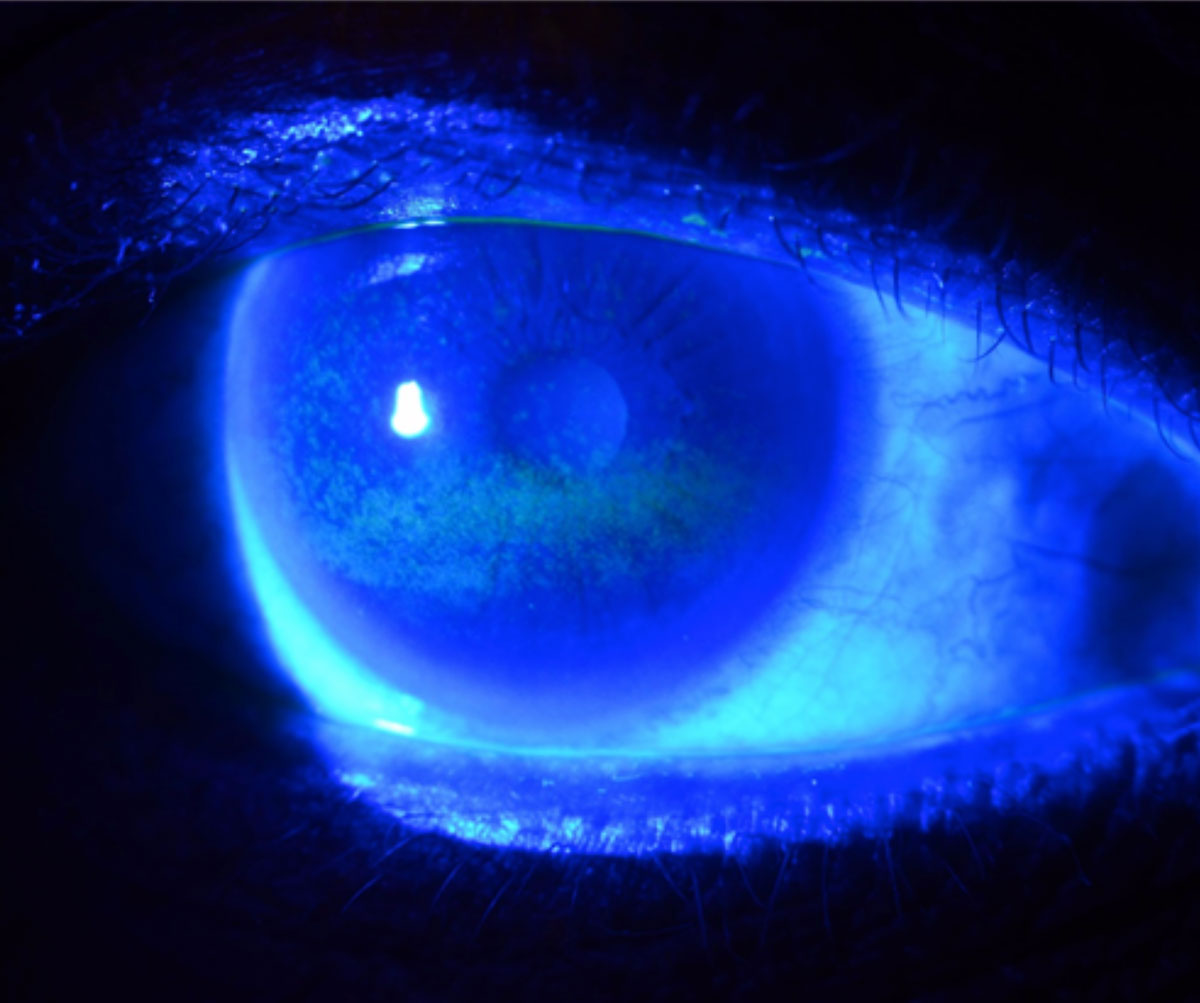 |
|
Patients with peripheral neuropathy may be asymptomatic, but they could have underlying signs of dry eye disease. Researchers suggest the DEQ-5 over the OSDI questionnaire as it may be a “more a suitable tool in discriminating symptoms of dry eye disease." Photo: W.R. Buie, OD. Click image to enlarge. |
Although researchers and clinicians are well-attuned to the retinal complications of diabetes, the condition can also pose a host of ocular surface complications for patients that deserve attention, including peripheral neuropathy. In addition, if the patient has comorbid dry eye disease, it could increase the risk of serious complications. Early observation of manifestations can help mitigate the effects of these conditions, but how do signs and symptoms develop in the first place? Researchers from Australia conducted a study to determine whether moderate to severe peripheral neuropathy increases the risk of dry eye disease.
Prior to the study, researchers recruited 63 patients with type 2 diabetes. Each subject answered both the Ocular Surface Disease Index and the Dry Eye Questionnarie-5 to allow physicians to better determine the severity of symptoms. Along with these questionnaires, the researchers measured participants’ tear osmolarity, lipid layer thickness, noninvasive keratography breakup time and volume of tear production. Also, a corneal confocal microscope was used to examine corneal nerve morphology.
The study’s population was divided into two groups in order to test the researchers’ hypothesis. To see how moderate to severe peripheral neuropathy impacts the risk of developing dry eye disease, 48 subjects (76%) were categorized as no/mild peripheral neuropathy, and 15 subjects (24%) were categorized as moderate/severe peripheral neuropathy.1
According to their findings, patients who experienced moderate or severe peripheral neuropathy were reported to be at a significant risk for developing dry eye disease. Eleven subjects (73%) from the moderate/severe group were diagnosed with signs and symptoms of dry eye, while 20 subjects (42%) were diagnosed in the no/mild group. Volume of tear production and corneal nerve fiber length were significantly reduced in the moderate/severe group compared to the no/mild group. Only the OSDI questionnaire scores and the noninvasive keratography breakup time measurements showed no significant difference between the two groups.
“One of the major findings of this study was that dry eye disease symptoms as assessed with the DEQ-5 were significantly worse in those with moderate to severe neuropathy compared with those with no or mild neuropathy,” reported the researchers in their study, published recently in Optometry & Vision Science. “However, there was no association between the severity of neuropathy and the severity of dry eye symptoms. Those with more severe neuropathy may eventually develop an asymptomatic status as severe neuropathy has been associated with corneal hypoesthesia.”2 From their study, they found that 21 subjects (33%) developed signs, but no symptoms, of dry eye disease.
“Patients with worsening peripheral neuropathy in type 2 diabetes exhibit a higher risk of developing dry eye disease,” concluded the researchers in their study. “It is therefore imperative to evaluate the ocular surface in patients with diabetes, irrespective of symptomatology.” Peripheral neuropathy impacts a great number of diabetic patients. The researchers found that at least one-third of all patients are affected by this condition. Add the fact that dry eye disease is prevalent in 38 to 54 percent of type 2 diabetes cases,3,4 it becomes apparent that this coexistence is quite common and should be identified in early stages.
| Click here for journal source. |
1. Tummanapalli SS, Wang LL, Dhanapalaratnam R, et al. Moderate-severe peripheral neuropathy in diabetes associated with an increased risk of dry eye disease. Optom Vis Sci. September 16, 2024. [Epub ahead of print]. 2. DeMill DL, Hussain M, Pop-Busui R, et al. Ocular surface disease in patients with diabetic peripheral neuropathy. Br J Ophthalmology 2016;100:924=8. 3. Manaviat MR, Rashidi M, Afkhami-Ardekani M, et al. Prevalence of dry eye syndrome and diabetic retinopathy in type 2 diabetic patients. BMC Ophthalmology 2008;8:10. 4. De Freitas GR, Ferraz GA, Gehlen M, et al. Dry eyes in patients with diabetes mellitus. Primary Care Diabetes 2021;15:184-6. |


